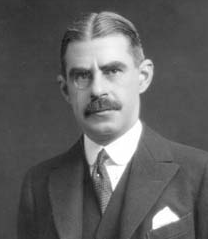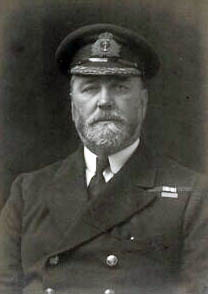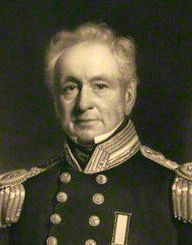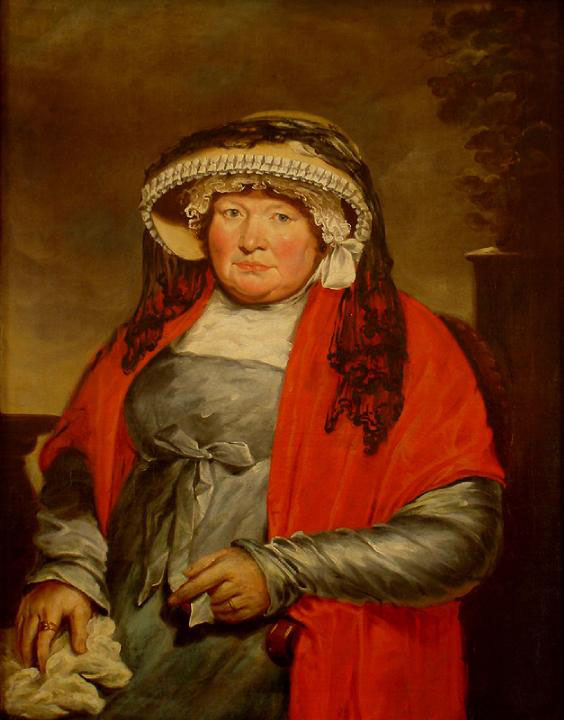A B C D E F G H I J K L M N O P Q R S T U V W X Y Z
Click on any portrait to view (opens in new window)
1809-1889
He was born in Brighton, son of a carpenter and builder, the oldest of eight (seven surviving) children. He is first identified as a builder with premises in Norfolk Square (1837). As a brewer at Brighton Brewery in Osborne Street, he employed 11 men (1861) and had retired by 1871. He became a property developer in the Cliftonville and Aldrington areas. He died of acute dysentery and was buried at St Andrew's Church, Hove.
• George Street, Hove
PERSONAL
• 7 Cranbourne Street [residence 1851] living with brother
• 44 Albany Villas (Albany Cottage) [residence 1854-1861]
• 3 Ventnor Villas [residence 1862-1887]
1921-1996
 Writer.
Writer.Author of more than 30 novels, mainly children's fiction based on historical themes. He was born in Brighton and attended Brighton Grammar School from 1932 to 1938.
• 23 Palmeira Mansions, Church Road [childhood/family home]
1861-1946
GARNETT, David
1892-1981
 Constance Garnett. Translator of Russian literature.
Constance Garnett. Translator of Russian literature.She was the daughter of David Black and sister of architect Ernest Black, Clementina Black and Arthur Black. She was educated at Brighton and Hove High School and Newnham College, Cambridge. She moved to London in 1905 married the writer, publisher and literary editor Edward Garnett in 1889 She was the mother of David Garnett. Writer.
Son of Constance and Edward Garnett, he was born at his mother's family residence in Brighton. He was a conscientious objector during the First World War, around which time his =lovers included John Maynard Keynes, Lytton Strachey and Duncan Grant. After the death of his first wife in 1940, he married Angelica Bell, daughter of Duncan Grant and Vanessa Bell, in 1942. A sculpture of his is in the garden at Charleston.
• 58 Ship Street [family residence 1861-1871]
• 40 Buckingham Place [family residence 1877-1893, David's birthplace]
1902-1966
 Actor.
Actor.Born Reginald John Arthur Dandy, he began his film career in Hollywood in 1929, just as the talkies began, making films mainly for Fox. During the gap in his filmography between 1931 and 1934 he returned to the UK, where he continued a steady output, mainly in leading roles and often in musicals until, for his last film The Great Victor Herbert (1939), he returned to Hollywood. Film critic Geoff Brown describes him as 'an actor-singer of unbending mien'. He died in San Francisco.
• 148 Queen's Park Road [childhood home]
1877-1947
 Soldier.
Soldier.Born in Litchfield, the son of a stone merchant, he joined the army. He served in the second South African (Boer) War. In 1911 he was a brevet major in the Royal Army Service Corps (RASC) and during WW1 he was a lieut-colonel in 1917 and full colonel in 1918. He was in charge of salvaging military hardware at the end of the war and developed expertise in military mechanised transport. As colonel-commandant of the RASC he supervised the development of six-wheel personnel carriers. He was retired from the General List in 1944, by which time he was living in Hove. He died there, is buried in St Margaret's graveyard, Rottingdean and left £11,347 2s 4d.
• 2 Hove Park Road [residence <1941-1947]
1877-1947
Born in Co Meath, Ireland, graduate of Edinburgh medical school 1790. Senior physician to the Sussex General Infirmary, author of Practical Observations on the Use and Abuse of Cold and Warm Sea-Bathing in Various Diseases: particularly in scrofulous and gouty cases (1813), which anticipated the use of shock treatment for mental disorders. He was a friend of the Prince Regent. His will, dated 23 April 1836, is in the National Archives1. He died in Co Meath.
• Old Steine [practice]
1PROB 11/1860/463
1841-1933
GILKES, John Harry JP
1864-1954
Born in Hackney, son of a paper maker, he founded the business in Brighton in 1872. His occupation was given as a paper stainer in Census1871-1891 (and as a marble-paper manufacturer in directories) but he also ran the Marlborough Place premises as a lodging house in the early days. His third, fourth and fifth sons emigrated to Australia. He died at Telscombe Cliffs, is buried in Brighton Extra-Mural Cemetery and left £8,592 12s 6d.
Harry Gilkes. Decorators' merchant.
Born in Brighton, eldest son of John Gilkes, he was a bookseller's apprentice (1881) but by 1891 was the manager of his father's business.
• 33 Marlborough Place [1873-1880]
• (68-)69 North Road [1881-1909]
• 146 North Street [business 1909-1925]
• 33 Gardner Street [business 1909]
PERSONAL (John)
• 23 Claremont Street [1871]
• 33 North Road [1878]
• 3 Montpelier Crescent [1891-1933]
• Wychcote, 43 Dyke Road Avenue [residence 1904-1905] built for him
• Montpelier, 45 Dyke Road Avenue [residence 1908-1915]
PERSONAL (John Harry)
• 35 Cheapside [1864 birthplace]
• 23 Claremont Street [1871]
• Wychcote, 43 Dyke Road Avenue [residence 1908-1938]
• 10 Eaton Gardens [residence 1952-1954] ????
1882-1940
 Sculptor, designer, typographer and artist.
Sculptor, designer, typographer and artist.Image: Portrait by Clifford Hedley Alfred Hoing [Wycombe Museum]
• 32 Hamilton Road [birthplace]
• 53 Highcroft Villas [childhood home]
• Prestonville Road [residence]
1825-1892
 Equestrian performer and circus proprietor.
Equestrian performer and circus proprietor.When he died here he owned The Eden Theatre in North Road, Brighton, the Hippodrome theatres in Belfast and Torquay and 274 horses. He is buried in Woodvale Cemetery in a mausoleum topped with a statue of a horse.
• 27 Wellington Road [residence]
† Eden Theatre, North Road, Brighton
• Woodvale Cemetery Lewes Road [burial place]
1900-1981
 Swimmer.
Swimmer.Born in Brighton, the daughter of a journeyman baker and a language teacher, she was the first woman to swim the English Channel (1927) and the Straits of Gibraltar (1928), among other endurance swimming feats. She used sponsorship of her swims to raise substantial funds for her trust to house the destitute and homeless1. She is the subject of the 2024 feature film Vindication Swim.
• 124 Freshfield Road [birthplace]
1DNB
1831-1914
Born at sea en route to Bombay, he joined the Madras Artillery as a 2nd Lieutenant in 1850, was promoted to captain 1860 and from colonel to major-general 1883; he retired 1884 with the honorary rank of lieutenant-general.
• 6 Eaton Gardens [residence 1907-1914, probable deathplace]
1833-1912
A resident of Montreal Road from the 1880s, he died unmarried, leaving money for William Godley's Charity and bequeathing £1,000 to build a clock tower in Queen's Park from an estate of £13,842 11s 2d.
• 2 Montreal Road
• Queen's Park (clock tower)*
c1022-1066
 King of England.
King of England.He reigned 5 January-14 October 1066 as successor to Edward the Confessor and the last Anglo-Saxon monarch, losing in battle to William of Normandy. His father was Godwin, Earl of Wessex, and his grandfather probably Wulfnoth Cild, a thegn of Sussex. He held the manor of Patcham during the reign of Edward the Confessor.
• Patcham
1922-2012
 Actress.
Actress.Having performed with ENSA during the Second World War, Joyce Golding became a leading variety artiste in the post-war years. She was married in 1949 to William 'Freddie' Squires, brother of Dorothy Squires. Following the death of Freddie in 1955, she formed a double act with Tony Stuart, a Brighton singer and actor, with whom she put on variety shows at the 42 Club and the Temple Bar in Brighton; they later ran a gay club, the Queen of Clubs, in Norfolk Square. She retired in 1962 and lived with her daughter in Hove. From 1987 she had a paper round, delivering newspapers from her scooter, which she continued until two days before her 80th birthday, making her the oldest known papergirl in the country.
• Wilbury Gardens
1778-1859
GOLDSMID, Isabel
1788-1860
GOLDSMID, Sir Julian 3rd bt
1838-1896
D'AVIGDOR-GOLDSMID, Sir Osmond Elim bt
1877-1940
In 1830 he acquired the 250-acre Wick Estate for £55,525 He was the first Jew to be granted a baronetcy (by Lord Melbourne in 1841). The Knighthood of the Tower and Sword of Portugal was bestowed on him in 1846 with the title Baron de Palmeira in regard for his work in resolving a financial dispute between Portugal and Brazil. One of the founders of the London Docks and of University College London (then the University of London), for which he acquired the site in Gower Street. He married his cousin Isabel Goldsmid, daughter of Abraham Goldsmid, in 1804. His daughter Rachel married Count Henri Salomon d'Avigdor, Duke of Acquaviva.
Isabel Goldsmid.
A daughter of Abraham Goldsmid, married her cousin Issac Lyon Goldsmid.
Sir Julian Goldsmid 3rd bt. Landowner, politician, businessman.
He succeeded his uncle, Sir Francis Goldsmid, to the estates in Sussex, Kent and Berkshire, including Somerhill House, near Tonbridge, Kent. Defeated in parliamentary elections in Brighton in 1864 and 1865, he was unopposed in the 1866 by-election at Honiton but lost the seat when it was disfranchised in 1868. He was elected MP for Rochester, Kent in 1870 but lost in the 1880 election and in the by-election at Sandwich that same year. He was finally MP for St Pancras South from 1885 until his death, being appointed a deputy speaker of the House of Commons in 1894. He was a director of the London, Brighton & South Coast Railway and vice-chancellor of the University of London 1895-1896. He died in Brighton, although his principal resident was Somerhill, near Tonbridge, Kent.
Sir Osmond D'Avigdor-Goldsmid.
Succeeding to the Goldsmid estates on the death of his cousin, Sir Julian Goldsmid, he was granted a baronetcy in his own right in 1934. Nephew of Sir Julian Goldsmid, who had eight daughters but no sons, so Osmond inherited his uncle's entailed property in 1896. He was High Sheriff of Kent and President of the Board of Deputies of British Jews. Locally he was a Hove county magistrate (1906-1908). The baronetcy that became extinct on Sir Julian's death was revived for Osmond in 1934 in recognition of his public service.
1
 2
2 3
3
Images: 1. Sir Isaac Lyon Goldsmid portrait by Julia Goodman [UCL Culture]; 2. Sir Julian Goldsmid MP by Attilio Baccani [Senate House, University of London]; 3. Sir Osmond D'Avigdor-Goldsmid
• Davigdor Road
• Goldsmid Road
• Palmeira Avenue
• Palmeira Mansions
• Palmeira Mews
• Palmeira Place
• Palmeira Square
• Isabel Crescent
• Julian Road
• Osmond Road
1784-1875
He served in most battles of the Napoleonic Wars, then saw action during the Peninsular War in the army of Sir Arthur Wellesley. Commander-in-chief in India from 1850 to 1855 and Constable of the Tower from 1872, he died at his final residence in Brunswick Terrace.
• 33 Brunswick Terrace [residence -1875]
1818-1903
 Aristocrat, politician and landowner.
Aristocrat, politician and landowner.MP for West Sussex from 1841 to 1860, when he succeeded to the Richmond dukedom and as 6th Baron of Settrington, 6th Duke of Lennox, 6th Earl of Darnley, 6th Lord of Torboulton, 6th Duke D'Aubigny and 6th Earl of March. He became leader of the Conservatives in the House of Lords in Disraeli's administration 1870-1876 and Lord President of the Council 1874-1880, among other ministerial posts. One historian, (Lord) Robert Blake, described him as 'an amiable but ineffective nonentity', and another, Paul Smith, described him in Disraelian Conservatism and Social Reform as 'a man of little calibre . . . an aristocratic amateur of the old type, whose main concern seems to have been to get the business of the session over and depart to the Scottish moors'. With his titles, he interited extensive estates in Banff and Aberdeen.On ceasing to lead the Lords in 1876, Queen Victoria revived a Scottish dukedom for him as 'a right and proper thing'. He was created 1st Duke of Gordon and 1st Earl of Kinrara.
• D'Aubigny Road
• Richmond Road
• Richmond Road
1788-1870
 Clergyman.
Clergyman.A cousin of Admiral Lord Horatio Nelson, he was minister of the Union Chapel from 1823/24 to 1862. Born in East Dereham, Norfolk. He was secretary to the Board of Governors of the Brighton Union Charity School, Middle Street 1835-1866 and founded at least two schools: the Royal British School, Eastern Road (with Lord John Russell) and one for the children of fishermen at the southern end of West Street. In 1841 and 1851 he lived at 174 Western Road, in 1861 at 1-2 Sussex Square. Both were girls' schools where in the later years his two daughters were school mistresses. With his architect son H N Goulty, Amon Henry Wilds and John Cordy Burrows, he founded the Brighton Extra Mural Cemetery in 1850, where a monument in his memory, costing £100, was unveiled in May 1871.
• Union Chapel, Union Street
• 187 Western Road [residence 1852-1854]
• 2 Sussex Square [residence 1859]
1843-1912
 Soldier and promoter.
Soldier and promoter.Born at Niagara Falls, New York into an old French family, he described himself as 'a Yankee cavalry officer who had English blood in his veins'. He volunteered for the Federal army in the American Civil War and was awarded the Congressional Medal of Honour for his bravery at the battle of Honey Hill and Ball's Bluff. During the war he met Thomas Edison, for whom he later raised funds for developments in telegraphy and was appointed its London representative. The General Post Office did not adopt the system. But Gouraud, now living in London, was instrumental in the formation and promotion in the UK of the Edison Telephone Company. (An employee was a 23-year-old George Bernard Shaw.) The Edison company merged with Bell to form the United Telephone Company, of which Gouraud was a director, and this then became part of the National Telephone Company in 1889 (see Telecommunications in Brighton and Hove). Gouraud also promoted the Edison phonograph in the UK. In 1908 he formed a company with the Short brothers to develop aircraft, including passenger-carrying balloons, and financed a 'Menlo Laboratory' in Hove, which closed by 1903. Gouraud became a naturalised British citizen in 1900 and moved to Hove, living at Gwydyr Mansions and in various seafront hotels. He was a defendant and counter-litigant at Brighton Crown Court, including a case about the 'Gouraudphone', for which he rented Fulking Grange, owned by Samuel Denman, in 1900. He was president of the Brighton Municipal Vigilance Committee (1904) and became known as 'a well-known Brighton figure'. He stood unsuccessfully for Brighton council and campaigned by attaching phonographs to bathchairs to present ideas for radical reform. In a court case brought by the National Telephone Company in 1908 he was described by two operators as 'the greatest nuisance in the Kemp Town district';'. Press reports ('Colonel Gouraud Again') are worthy of Beachcomber. He died at Vevey, Switzerland.
• 94 Lansdowne Place [1882] • 1-2 Rochester Gardens [1900]
• Gwydyr Mansions, Holland Road [1900]
• Menlo Laboratory, 2 Westbourne Villas [1900-1903]
• 9 St Margaret's Place [residence 1901]
• Edison House, 109 Marine Parade [residence 1906-1908] His son lived here 1904-1905 and at 108 in 1907-1908. His wife died here in 1907.
1867-1952
 Sailor.
Sailor.Chief of staff to Second in Command of the Grand Fleet at the Battle of Jutland 1916 and chief of the Australian Naval Staff 1919-1921.
Image: Photographic portrait by Walter Stoneman [National Portrait Gallery]
• 8 Palmeira Court
1783-1859
 Sailor.
Sailor.• 3 Adelaide Crescent [residence 1856-1859]
1924-1972
 Actor.
Actor.Born in Pretoria, South Africa, he was best known for playing military and authoritarian types. He came to fame in the mid 1960s in Zulu (1964), and The Ipcress File (1965). He was found dead of an accidental overdose of sleeping tablets in his Sussex Square flat, although some believed it may have been intentional.
• 12 Chichester Terrace [residence, mid 1950s]
• 3 Sussex Square [final residence from 1958]
1794-1852
Son of a Hampshire greengrocer, he had several occupations—including as head clerk in a Brighton bank— before becoming editor of the Brighton Gazette. He funded the construction in 1824 of St Margaret's Chapel, so named to honour his first wife. In 1827 he took over The Age and founded a journal called The Satirist in 1831. He left Brighton and in 1841 lived in North Audley Street, Westminster. In 1843 he was sentenced at Middlesex Assizes to two terms of eight and four months for two libels against the Duke of Brunswick.
• North Street Colonnade [residence 1826]
1762-1815
 Bathing machine operator.
Bathing machine operator.Most famous of the Brighton 'dippers', she was the seventh daughter (eighth child) of Nathaniel Gunn. She married Reuben Cobby Humphrey and had 13 children. She was buried in St Nicholas' churchyard, where her tomb is Grade II listed.
• Martha Gunn PH, 100 Upper Lewes Road
PERSONAL
• 36 East Street [residence]
